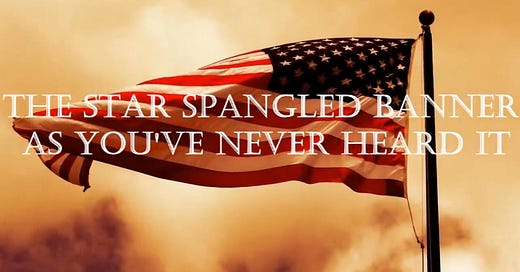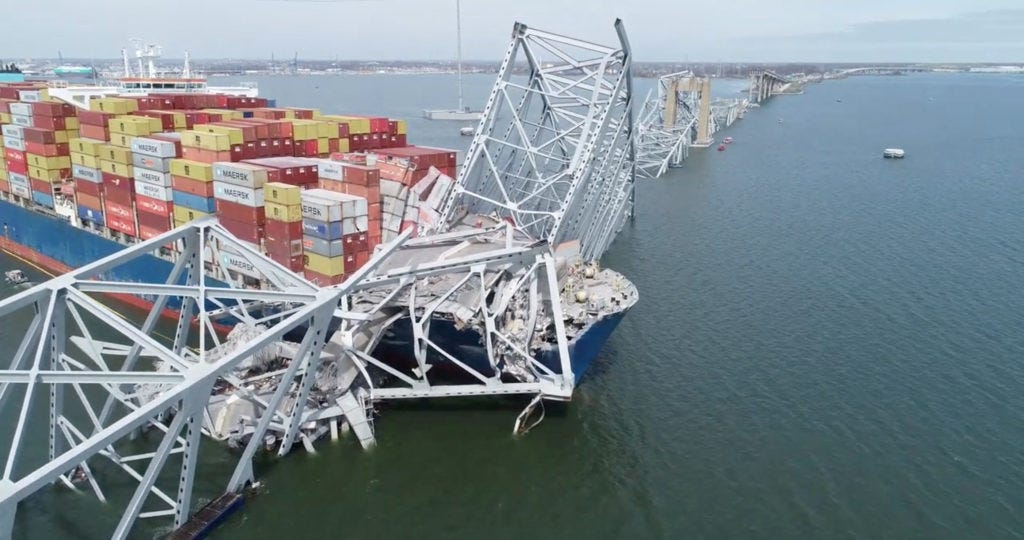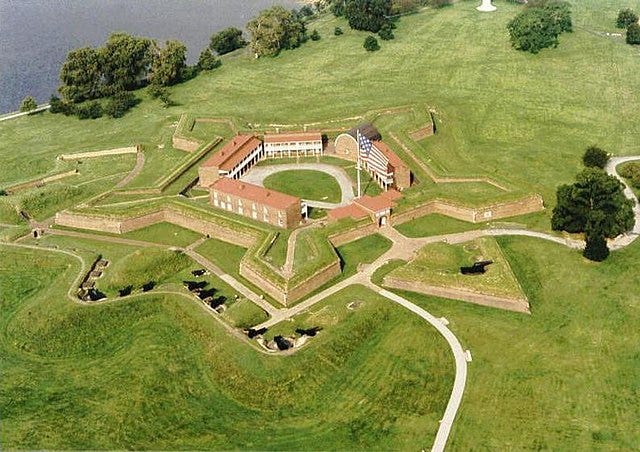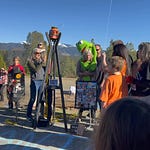I usually hold myself to sharing no more than one post in a day, yet today, I stumbled upon a video so stirring that I felt compelled to break my own rule. In such times, a journey through our history feels timely and necessary. It's a call to remember the path we've trod, the lives that have been laid down, and the principles we're duty-bound to uphold. I invite you to gather with your loved ones for a few moments to watch a powerful recounting of a piece of our national heritage—a song that has graced our lips countless times, often without a full understanding of its origins.
Just as I shared the poignant tale of the 9/11 Boatlift not long ago, here's another narrative deserving of a place in every American heart and home. This is the saga of Francis Scott Key, a name immortalized by the destroyed bridge spanning the Port of Baltimore, a man until today, I knew nothing about. Unbeknownst to me was the depth of his contribution and the profound saga of perseverance and sacrifice that birthed "The Star-Spangled Banner."
Oh, say, can you see
By the dawn's early light
What so proudly we hail'd
At the twilight's last gleaming?
Whose broad stripes and bright stars
Through the perilous fight
O'er the ramparts we watch'd
Were so gallantly streaming?
And the rocket's red glare
The bombs bursting in air
Gave proof through the night
That our flag was still there
O say, does that star-spangled banner yet wave
O'er the land of the free
And the home of the brave?
I highly recommend you watch the video above. Grab your children and watch together this story of resilience, freedom, and a nation's enduring spirit. May it inspire, remind, and draw us closer to the essence of being American.
And also remind us why we must fight for our nation now more than ever….
WHO WAS FRANCIS SCOTT KEY
Francis Scott Key, an American lawyer, author, and amateur poet, became indelible in American history through his composition of "The Star-Spangled Banner," the United States national anthem. Born on August 1, 1779, in what is now Carroll County, Maryland, Key witnessed a pivotal moment during the War of 1812 that inspired his iconic song.
The backdrop to creating "The Star-Spangled Banner" was the Battle of Baltimore, fought between British forces and American defenders in September 1814. During this period of the War of 1812, the British, fresh from burning the U.S. Capitol and the White House, set their sights on Baltimore, a crucial port. Key found himself in a unique position during this conflict. He had boarded a British ship under a flag of truce to negotiate the release of a friend taken prisoner. While successful in his mission, Key and his companions were detained on the ship by the British to prevent them from revealing the impending attack on Baltimore.
From this vantage point, Key witnessed the relentless bombardment of Fort McHenry, the guardian of Baltimore's harbor, on the night of September 13-14, 1814. Despite the ferocity of the British assault, dawn broke to reveal the American flag still flying proudly over the fort, signaling a decisive victory for the defenders. Moved by the sight and the resilience of the American spirit, Key penned the poem "Defence of Fort M'Henry." His words, set to the tune of a popular British song, captured the profound relief and patriotic fervor of the moment.
Key's poem, soon retitled "The Star-Spangled Banner," circulated as a handbill before being published in newspapers and eventually set to music. Though it was popular from the outset, it wasn't until 1931 that Congress officially designated it as the United States' national anthem.
Francis Scott Key's legacy, encapsulated in "The Star-Spangled Banner," extends beyond the lyrics of national pride and perseverance. It serves as a reminder of a critical juncture in American history when the young nation defended its sovereignty against formidable odds. The song, with its vivid imagery of "the rockets' red glare" and "bombs bursting in air," immortalizes the Battle of Baltimore and celebrates the enduring spirit of American freedom.
A TIMELY SYMBOLISM
The recent event involving the Dali container ship bringing down the Francis Scott Key Bridge carries profound symbolism, touching on America’s current vulnerability and challenges. This bridge is not just a physical structure but a monument to American resilience and perseverance through adversity.
Just as Francis Scott Key witnessed the bombardment of Fort McHenry (yes, a star fort) and was moved to write a poem that encapsulated the American spirit of defiance and hope, the event of the bridge's unexpected downfall can be seen as a call to reflect on current challenges and the enduring strength of our national character.
Perhaps we can see this incident as a metaphor for transformation and renewal. Just as the nation has rebuilt and emerged stronger from past adversities, the response to this event can symbolize the ongoing commitment to resilience, innovation, and unity in the face of unforeseen challenges. It reminds us that while physical structures may falter, the spirit they symbolize remains unbroken, driving us toward recovery and renewal with the same courage and determination that Francis Scott Key so admirably captured in "The Star-Spangled Banner."
Ad astra per aspera.
If you find these interviews and articles informative, please become a paid subscriber for under 17¢ a day. I don’t believe in paywalls, but this is how I make a living, so any support is appreciated. Either way…. it’s available to you….


















Share this post